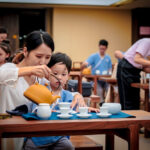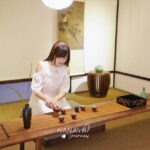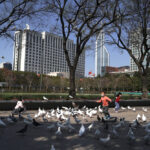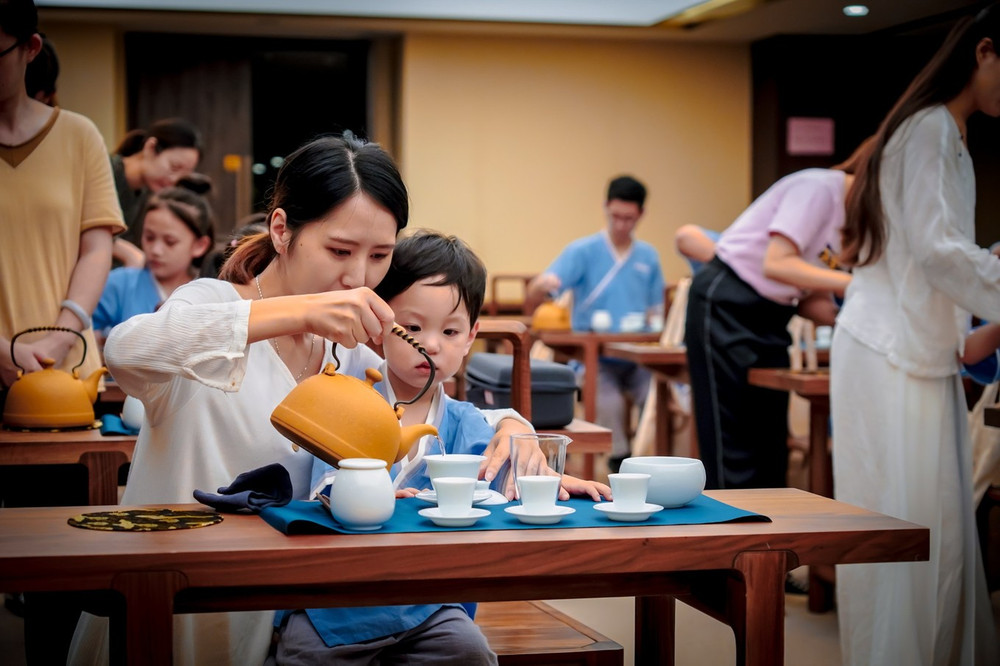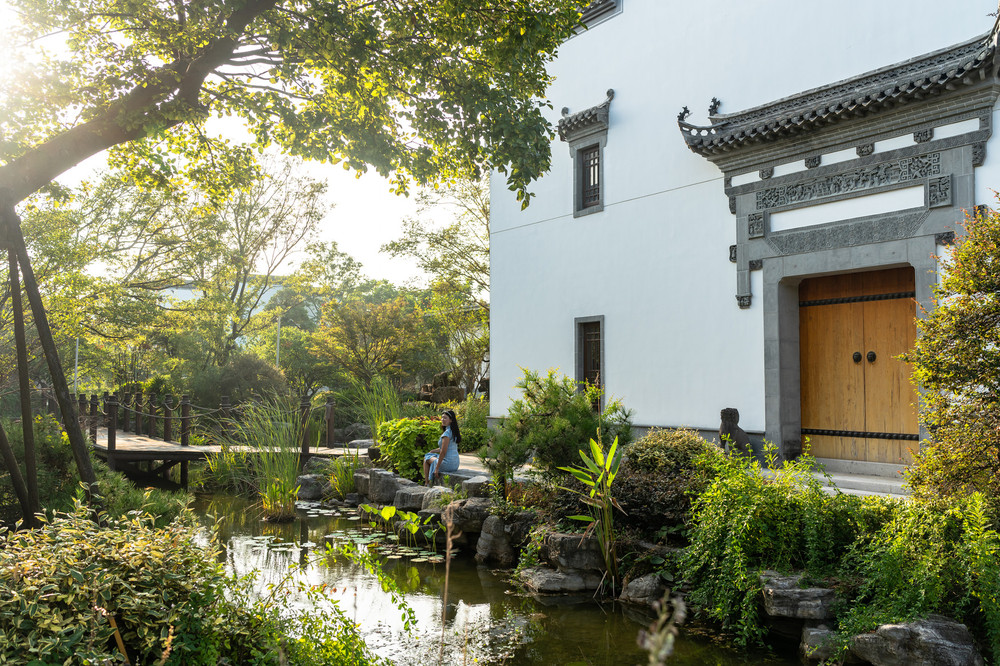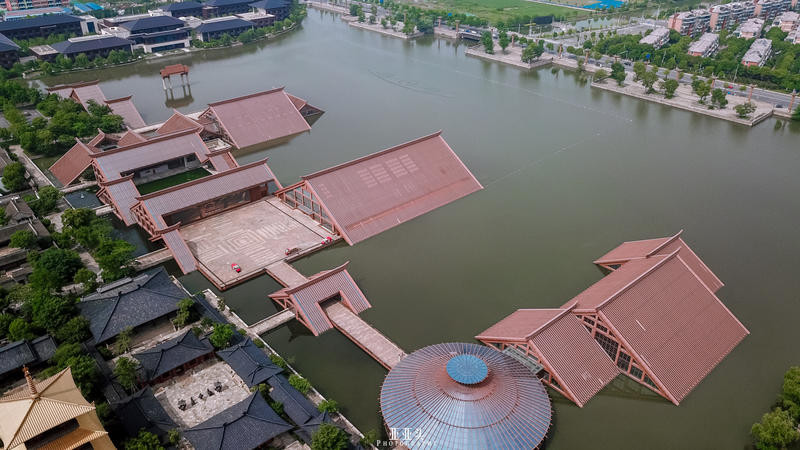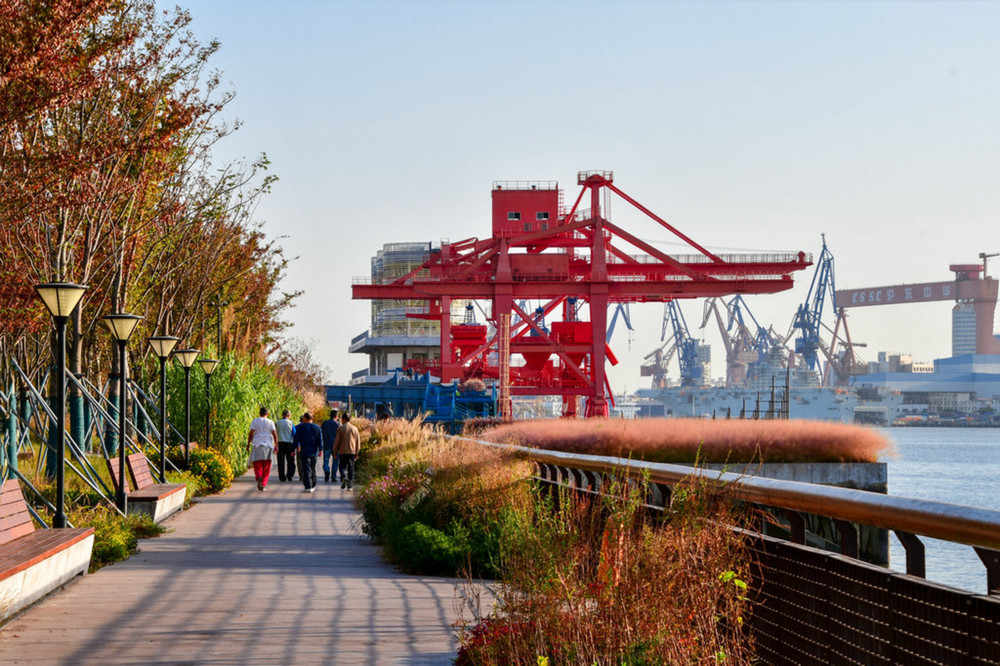Duration: 1 day. Time: January. With whom: Couple. Ways of playing: Self-driving, independent travel, hiking, budget travel, saving money, weekend tour. Posted on April 14, 2022, 21:36. Tourist location: Shanghai People’s Park.

People’s Park is an extremely common name. Many cities have People’s Park, and basically the geographical location is not too remote. The geographical location of Shanghai People’s Park is in the most prosperous section of the city center. The main park gate is located on Nanjing West Road, bordering Nanjing West Road in the north, Shanghai Municipal People’s Government and People’s Square in the south, Huangpi North Road in the west, and Tibet Middle Road in the east.
The park opened on October 1, 1952, and was named by Marshal Chen Yi, who was then the mayor. In 2000, a large-scale reconstruction was carried out. There are antique old buildings in the north. Across People’s Square in the south is the emerging skyline of the city. Many people think this is Shanghai’s ‘Central Park’. In terms of geographical location, this title is not exaggerated.
Every time I go to the Shanghai Museum, I always go for a stroll in the park when I come out. Sometimes I go for lunch or something. The surrounding area is still very lively.
The park is divided into three scenic areas: the eastern, central, and western parts. But in fact, the park is not large. It doesn’t take too long to walk around, so there is no need to follow a map. Entering from the entrance, on the east side of the central avenue is the statue of Zhang Side, facing east and with his back to the west, 4 meters high.Zhang Side was born in 1915 into a poor tenant farmer’s family deep in the Daba Mountains. In December 1933, he joined the Red Army and soon after, the Communist Youth League. In 1935, he marched with the Fourth Front Army of the Red Army, crossing the snow-capped mountains and grasslands where few dared to tread, not once, but thrice. In the Maozhou area of western Sichuan, he performed a remarkable feat by single-handedly capturing two enemy machine guns, earning him the affectionate nickname ‘Little Tiger’ among his fellow soldiers. This act became a celebrated tale for some time. He officially joined the Communist Party of China in 1937.
In early 1944, Zhang Side积极响应了党中央发起的大规模生产运动的号召,主动前往安塞县石峡沟生产农场担任副队长。On September 5, 1944, while Zhang Side and his comrade Xiaobai were digging a kiln, a sudden and dangerous situation arose as several pieces of broken soil fell from the top of the kiln. Zhang Side, with his quick reflexes, managed to push Xiaobai out of the cave with one hand just in time. The thick kiln top collapsed, burying Zhang Side underneath. Despite the efforts of soldiers and common people who rushed to the scene from all directions, Xiaobai was saved, but Zhang Side could not be rescued. He sacrificed his life at the young age of 29.
Mao Zedong delivered a memorial speech titled ‘Serving the People’ at Zhang Side’s memorial service in Yan’an, where he highly praised Zhang Side, stating: ‘Comrade Zhang Side died for the interests of the people.’
On both sides of the statue, which is hidden among the trees, are cedar groups, and behind them, crape myrtle and red maple trees stand tall, a fitting backdrop to the memory of this heroic figure.His death is even heavier than Mount Tai.
Scattered stone carvings with seal script can be found along the way, but most of the ancient characters are unfamiliar to us. At best, we can barely guess a few characters.
The People’s Park consists of two low hillocks, Dongshan and Xishan, that do not stretch far beyond the horizon. Dongshan is located in the southeast, standing at 9.7 meters tall and covering an area of 2,300 square meters. At its peak, there is a double-eaved octagonal pavilion, with yellow stones piled beside it and a relatively short corridor at the base of the hill.
Xishan is situated in the southwest corner of the park, reaching 11.8 meters in height and spanning 3,900 square meters. The northern side of the hill features artificial mountains made of lake stones and yellow stones, which are also not very large in scale. An octagonal pavilion also sits atop Xishan, featuring a glazed tile roof with upturned eaves and corners in a classical style.
The Xishan waterfall is considered the park’s main attraction, but it may be the dry season in Shanghai during winter, so the waterfall is not in its best form and only gives a rough impression. Below the waterfall, there is a pond that does not appear deep or large, but the water is quite clear, likely due to flowing water.
The ‘Antarctic Stone’ is located in the central part of the park, to the east of the Fengguang Building, collected by China’s first Antarctic expedition team on February 21, 1982, on George Island in Antarctica.The stone, dark brown and oval-shaped, stands at 1.7 meters tall with the inscription “Antarctic Stone” by Song Richang. Adjacent to the park’s main thoroughfare, the Shanghai Contemporary Art Museum sits, though today it hosts no exhibitions. At its entrance, Catholics are distributing pamphlets to the visitors.
The park features a lotus pond, which is composed of two interconnected bodies of water, with a metasequoia forest to the east. In winter, the metasequoia leaves turn a striking reddish-brown. Around the pond, stone tables and benches are surprisingly occupied by elderly people. Despite the lingering coolness of the weather, the presence of sunlight today is a fortunate addition.
On the opposite side of the pond, a waterside pavilion can be found. It is not particularly large and boasts a relatively simple architectural style. Although the park is not expansive, it does offer some recreational facilities, which, however, are not being utilized by many people. The most bustling area appears to be around the lotus pond.
This scene was captured on January 6th.
